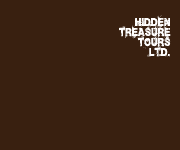
|
home:::contact:::events:::reservation:::links Collection of articles and links Many have said much about Budapest, some have even written down and published their thoughts. Though articles, books in English are not as numerous as the Hungarian ones, we are trying to offer a list as long as possible. If you'd like to share your ideas, hints on our page with others, please contact us. 
1. Bulldozing history. Interest group fights the demolition of Budapest's historic architecture (read full article...) The destruction of yet another landmark art nouveau building recently passed with little notice in a historic district of Budapest. The building, which stood tall on Holló utca, was once nestled on a bustling road known as "Goldsmiths street," in the old Jewish district of downtown Pest. Before it was reduced to rubble, the building was still in good condition, despite its decaying facade. The beautiful carpentry, arch-shaped windows and gilded door handles bore witness to the artistic splendour of the dawning 20th century. The staircase and balconies of the house were built by noted silversmith Lipot Fleischmann in 1913 and were ornamented with delicate wrought iron works. In the courtyard, adjacent to the house, the remains of a small art nouveau factory could still be seen. Fleischmann, in his day, could access it directly from his apartment. 2. Save the Jewish Quarter in Budapest! (read article...pdf.) 3. Childhood in Times of War - by Andrew Salamon. (read full story) Chapter IV. The "Final Solution" (1944) 4. Budapest Ghetto Gets Facelift (read article...) For many decades, through the Holocaust and communist rule, the streets of the ghetto were largely flushed of any Jewish presence. 5. The Siege of Budapest: the Nadir in Hungarian History. (read article...) The Soviet army had Budapest surrounded on Christmas Eve 1944. Up to that point the city had survived the war largely intact. There had been some bombing by American forces in the summer of 1944, but it had been directed at industrial areas and the railroads. During the siege, there was shelling, but no heavy artillery. There was no food, electricity, gas or water, but because Budapest was still quite old fashioned in many respects, the people managed with wells, wood, coal and private baking for the duration of the siege. The conditions in the ghetto were much worse, with no food being delivered at all after December 24, 1944. Pest, on one side of the Danube, was liberated by Soviet troops first, on January 14, 1945, while Buda held out for another month against the Soviet advance. The taking of the Royal Castle and the caves beneath it was a massacre, with only some 700 escaping the fighting. 
1. 2. - Jews 3. - Legal policies 4. 5. - archival ghetto and camp photographs 6. Listing of over 200 books in English that are generally regarded by scholars and teachers as important in the study of the Holocaust. 7. A timeline of the events of the Holocaust with over 300 events from World War I until the end of World War II. |
|












